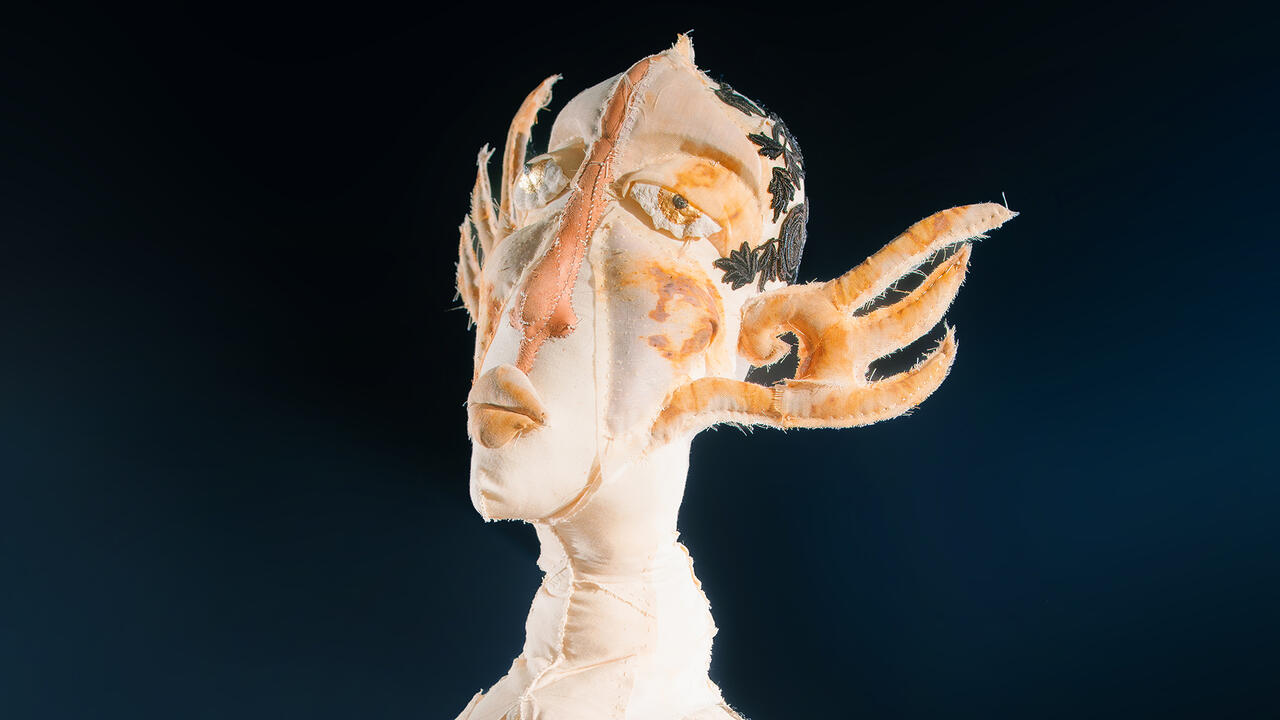The Miracle of Creation: Jes Fan and the Craft of Engineering Kinship
Fan’s work manipulates the archetype and architecture of the body as we understand it
Fan’s work manipulates the archetype and architecture of the body as we understand it

Visible Woman comes in two settings: pregnant and not pregnant. An anatomical model recommended for those aged ten and up, the kit was released in the US in the 1960s following the commercial success of Visible Man. Illustrated instructions are provided, guiding the assembly of removable parts into a clear plastic shell. Last year, on the day after Boxing Day, Jes Fan found an edition of the toy amid the sidewalk throwaways of their neighbourhood in Red Hook, Brooklyn. In the eponymous work Visible Woman (2018), the artist has created enlarged, resin versions of the detachable organs using 3D printing, fixing them to a network of plastic tubes that look both like model-kit sprues and a Chinese folding screen. Evoking both the craftsmanship of the hobbyist and the performance of Chineseness, Fan puts the body fully on display without eroding the potential of its modification.
Terminology relating to gender expression changes rapidly. The instructions for Visible Woman follow 19th-century US standards in using ‘after nature’ and ‘organs of generation’ to denote reproductive body parts. Fan’s work is part of a broader discussion about defining the word ‘trans’ – a marker that calls for the freedom of gender fluidity and non-interference in personal choices. The notion of kinship is also a driving force in their practice. Growing up in Hong Kong to a lineage of physical workers (their father ran a small toy factory and their aunt worked in a factory), Fan has long engaged with technical media, maintaining this familial link despite the typically low opinion of craft in contemporary art institutions.

The last time I saw Fan, they applied a creamy lotion infused with estrogen extracted from their mother’s urine onto the back of my hand. Their mother is post-menopausal: post-woman, as defined by Visible Woman, which equates womanhood with the ability to give birth. This lotion, along with a promotional video, comprises Mother Is a Woman (2018). By allowing the hormone to penetrate their skin, users establish a physical relation with Fan’s mother, raising questions about our understanding of kinship. As opposed to redefining the terms of kinship from a social standpoint, Fan researches and uses pharmaceutical hormones and other materials for body modification to determine different forms of biological attachment. In what Paul B. Preciado calls the ‘performative feedback […] of the pharmacopornographic regime’, the bodily function becomes its pharmaceutical counterpart: erection, Viagra; menstrual cycle, birth control pill.
Examining the body at the molecular level, Cellular Studies (2018) is a sculpture composed of soybean capsules (a key ingredient in commercially produced estrogen and testosterone), Aqua-Resin and fibreglass. Fan began investigating the pharmaceutical production of steroid hormones while at the Museum of Arts and Design, where they were a Van Lier Fellow in 2016–17. Sculpted from latex, silicone, glycerin and injectable Depo-Testosterone, the figure of the androgyne makes recurrent appearances in their work. Iterations of the performance Disposed to Add (2017) employed skin-coloured silicone barbell sets. Manipulated by two dancers, these barbells were stretched and pulled in a slow-moving modern dance workout that reaches no climax. Performed at Pioneer Works in New York and Spring Workshop in Hong Kong, Disposed to Add tests the limitations of the disciplined body in motion.

Furthering these investigations into bodily limits, Fan’s emphasis in their latest works is on architecture and design. If furniture is conceived for particular bodies, Fan’s goopy structures are shelves and tables for a form that has yet to be realized. The series ‘Diagram I–IV’ (2018) looks unlike any of Fan’s earlier work. Made from multiple layers of coloured Aqua-Resin, these pieces are laboriously sanded down to reveal the blending of dusty reds and creams. The limbs of the furniture-like works resemble giant modelling clay pieces with glass globules dripping from their joints. Fan describes the rhythm of sanding the works as methodically sensual, much as they describe silicone, in a January 2017 interview for the International Sculpture Center’s blog, as a bodily material that always stays wet. These works are wrought with exciting tactility. ‘Diagram I–IV’ also investigates the body, specifically the skin pigment melanin. Fan describes skin as the ‘plasticine of our psyche’, a surface and container that is the basis of racialization.
Looking forward, Fan is mapping out an artist book project titled Xenophora, comprised of interviews with scientists. Taking the question of class and gender quite literally, their framework engages with the controversial fields of epigenetics and something bordering on radical phrenology. Instead of treating the discussion of trans bodies as an issue of linguistics, their work manipulates the archetype and architecture of the body as we understand it. It enacts change at the molecular level. After all, what counts is on the inside.
Jes Fan’s ‘Mother Is a Woman’ is on view at Empty Gallery, Hong Kong, until 2 June.
Main image: Jes Fan, Visible Woman, 2018. Courtesy: the artist and Empty Gallery, Hong Kong



















